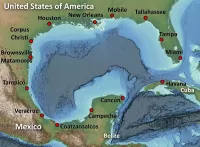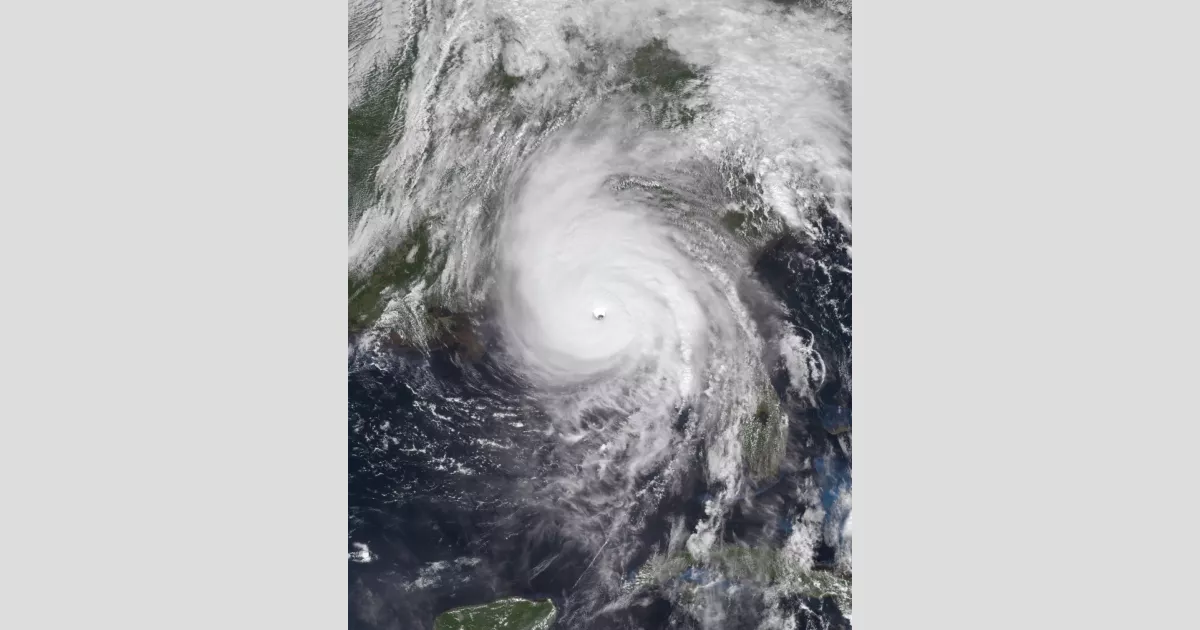Hurricane Michael was an exceptionally powerful and destructive tropical cyclone that made history in several ways. It was the first Category 5 hurricane to strike the contiguous United States since Hurricane Andrew in 1992, the third-most intense in terms of pressure, and the strongest ever recorded to hit the Florida Panhandle in October. Its impact was devastating, making it the fourth strongest landfalling hurricane in the contiguous U.S. based on wind speed.
1924: 1924 Cuba Hurricane
The 1924 Cuba hurricane was the most intense October hurricane in the North Atlantic basin before Hurricane Michael.
1928: Okeechobee Hurricane
The 1928 Okeechobee hurricane is tied with Hurricane Michael as the sixth strongest tropical cyclone by wind speed to impact the United States.
1935: Labor Day Hurricane
The 1935 Labor Day hurricane holds the record for the second-most intense hurricane by pressure and the third strongest by wind to make landfall in Florida, making it more intense than Michael in both measures.
1969: Hurricane Camille
Hurricane Camille, which occurred in 1969, also ranks among the most intense hurricanes based on pressure and is considered a benchmark for powerful storms.
1992: Hurricane Andrew and Michael: Category 5 Hurricanes
Hurricane Michael in 2018 became the first Category 5 hurricane to make landfall in the US since Hurricane Andrew in 1992.
1992: Hurricane Andrew Landfall
In 1992, Hurricane Andrew became the first landfalling Category 5 Atlantic hurricane in the U.S. since 1992 with 165 mph winds.
2002: Impact on Buildings and Agriculture
Buildings constructed before 2002 experienced substantial damage in the aftermath of Hurricane Michael. The hurricane significantly impacted the timber industry and caused damage to cotton, cattle, and peanut crops.
2018: Hurricane Michael Damage and Impacts
Hurricane Michael in 2018 resulted in at least 74 deaths and caused an estimated $25.1 billion in damages across Central America and the United States. The hurricane caused widespread damage, including significant economic losses, destruction of infrastructure, and extensive power outages.
2018: Hurricane Michael Formation and Landfall
Hurricane Michael originated in the Caribbean Sea on October 1, 2018, and intensified rapidly in the Gulf of Mexico, eventually making landfall as a Category 5 hurricane near Mexico Beach, Florida on October 10, 2018.
2018: Early Stages of Hurricane Michael
The meteorological events leading to Hurricane Michael's formation began in early October 2018 with the interaction of weather systems in the Caribbean Sea. The remnants of Tropical Storm Kirk, a tropical wave, and a broad low-pressure area contributed to the system's development.
March 2019: Name Retirement
Due to its devastating impact, particularly in the Florida Panhandle and southwest Georgia, the name "Michael" was retired in March 2019, and replaced with "Milton" for the 2024 season.
April 2019: Federal Relief Request
In April 2019, Florida Governor Ron DeSantis requested an increase in federal relief funding, from 75% to 90%, due to the reclassification of Hurricane Michael as a Category 5 storm.
2024: Replacement Name First Use
The replacement name "Milton" will be first used in the 2024 hurricane season.
Mentioned in this timeline

Ron DeSantis is an American politician who has served as...
Florida a state in the Southeastern United States is largely...
Mexico officially the United Mexican States is a North American...

The Gulf of Mexico is a marginal sea of the...
Cuba is an island country in the Caribbean consisting of...

Hurricane Andrew a compact but powerful hurricane in August remains...
Trending

Lily Allen is an English singer songwriter and actress known for her outspoken lyrics and pop music She gained prominence...

6 months ago Trans Athlete Wins California State Titles Amidst Controversy and Political Tension.
1 day ago Ultra-Processed Foods: Study Links Consumption to Harm Across Major Human Organs

5 months ago Ray Dalio Warns of Economic Crisis: Tariffs, Debt, and a Potential 'Death Spiral'

29 minutes ago Kristin Chenoweth shines in 'The Queen of Versailles' Broadway adaptation.

1 hour ago Kristin Cavallari Spotted Dating NBA Coach Will Hardy: A Nashville Romance?
Popular

XXXTentacion born Jahseh Dwayne Ricardo Onfroy was a controversial yet...

Cristiano Ronaldo often nicknamed CR is a Portuguese professional footballer...

William Franklin Graham III commonly known as Franklin Graham is...

Candace Owens is an American conservative political commentator and author...

Michelle Obama is an American attorney author and former First...

Bill Clinton the nd U S President - served as...
